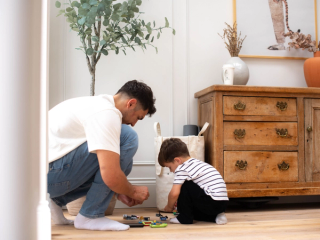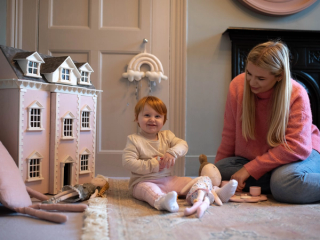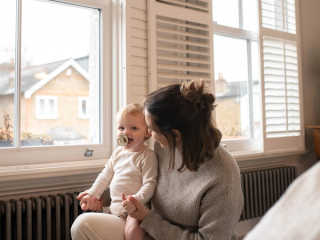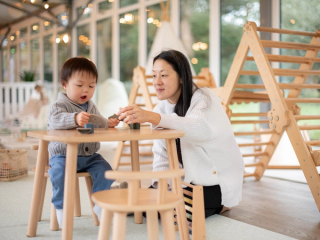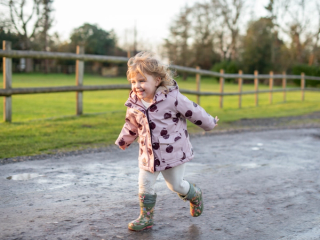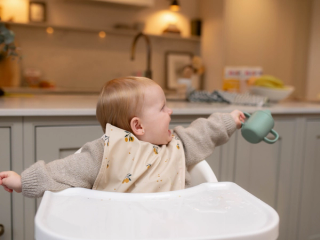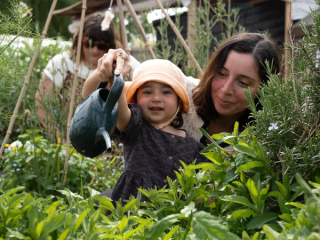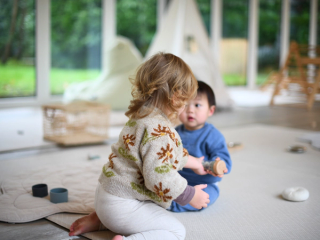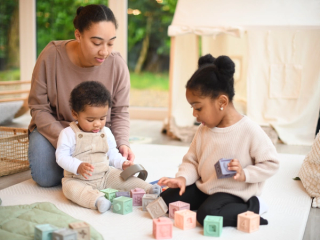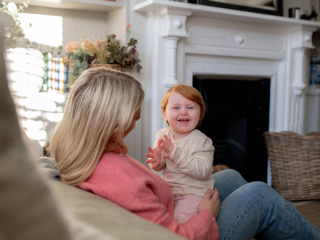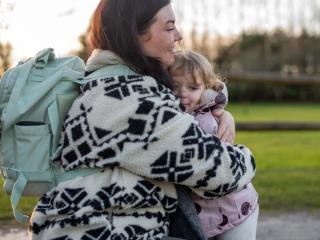
- Home
- Advice Hub
- Toddler
- Toddler Milestones
- Understanding Your Toddler’s Emotional Needs
Understanding Your Toddler’s Emotional Needs and Building a Sense of Security
Discover expert tips for helping your toddler understand and express their feelings, foster resilience, and strengthen your parent-child connection.
As your toddler grows and develops, their emotional world becomes more complex. You may notice that they experience a whirlwind of feelings- including excitement, joy, frustration, sadness, and even anger- sometimes all in one day. This emotional rollercoaster is a natural part of their development, and understanding these emotions, and knowing how to respond, is key to supporting them. By fostering emotional awareness, connection, and communication, you can help your toddler navigate this crucial stage with confidence and security.
Why Emotional Awareness Matters
Toddlers are just beginning to understand and express their emotions. By acknowledging that all emotions- whether happy, sad, or angry- are valid, you are teaching your child that it is ok to feel a range of emotions and you are creating a safe environment for them to feel understood. It is equally important to model this for them, so let them see that you also experience a range of emotions. For instance, saying, “I feel a bit tired today, so I might need some quiet time” or “I feel a bit sad, so I might need some extra cuddles”, teaches them that emotions are natural and manageable.
This emotional awareness forms the foundation for emotional regulation and builds trust, helping your toddler feel secure as they learn to navigate the world.
Helping Your Toddler Understand and Express Feelings
- Label Emotions: As you go about your day, label the emotions you see in real life, on TV, or in picture books. For example, if a character in a book looks sad, point it out and say, "The character is feeling sad" and talk about why they might feel that way. This not only develops emotional understanding but also builds vocabulary.
- Use Pictures: Create or use pictures representing different feelings. These can be simple drawings or photos showing various emotions like happy, sad, calm, angry, and excited. Use these pictures to explain how you are feeling and encourage your toddler to do the same.For example, if you are feeling calm, you might point to a card with a smiling, relaxed face and say, “I’m feeling calm right now. How about you?”
- Build It into Your Routine: Incorporate a daily "emotion check-in" where each family member takes turns sharing how they feel by pointing to the pictures. This practice not only helps toddlers learn to express their emotions but also fosters a sense of connection and understanding within the family.
Allowing Them to Make Mistakes
It is important to allow your toddler opportunities to make mistakes and experience the resulting emotions. This helps them learn resilience and problem-solving skills. When they make a mistake, guide them through their feelings and help them understand that this is a normal part of learning and growing. When your toddler spills their water or struggles to fit a puzzle piece, resist the urge to step in immediately. Instead, offer support like, “Oops! The water spilled. Let’s clean it up together,” or “Keep trying, you’re doing great!”
The Importance of Connection
Your connection with your toddler is the most important foundation for their emotional development. Spending quality time together (playing, reading, or simply talking), shows them that they are loved and valued. Physical affection, like hugs or a comforting hand on their arm, also reassures them of your support.
Connection helps toddlers feel secure enough to explore their emotions and the world around them. By creating a loving and open environment, you give them the tools they need to grow into emotionally aware and confident individuals.
Your toddler’s emotions are a vital part of their development, and by understanding and addressing their needs, you can help them thrive. Celebrate their feelings, model emotional expression, and build daily routines that encourage connection and communication. Remember, it is not about avoiding tough emotions but embracing them together, teaching your toddler that they are never alone in their journey.
Advice & tips

Want to read more? Join the HiPP BabyClub for full access to this article.
As a BabyClub member, you'll get access to a range of exclusive benefits, including:
Monthly competitions
Discounts from our Partners
Expert advice tailored to your little one's age
Weaning recipes
HiPP shop discounts*
*10% off HiPP's online shop does not apply to our First Infant, Anti-Reflux or Comfort Formula Milk.
Important notice: Breastfeeding is best. Follow on milk should only be used as part of a mixed diet from 6 months. Talk to a healthcare professional.




